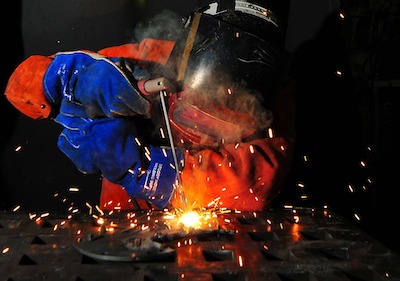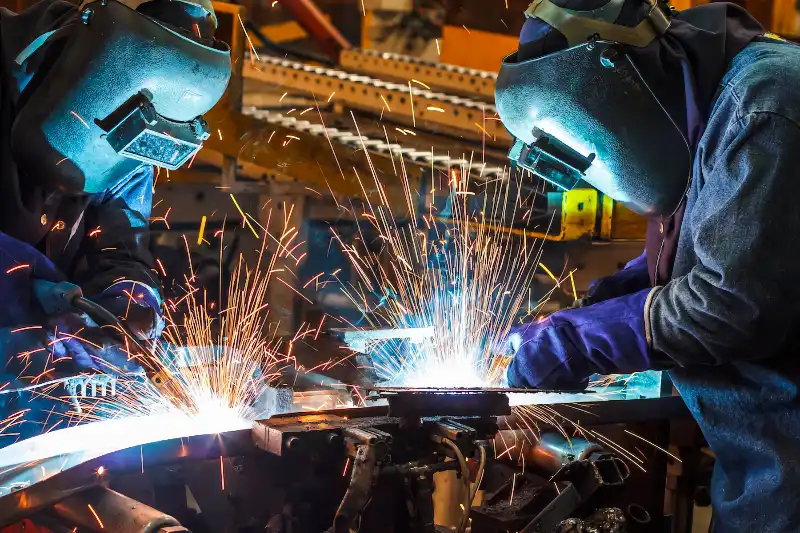Usual Welding Repair Issues and Just How to Address Them Effectively
Welding repair services typically come across a series of problems that can endanger the honesty of the end product. Common problems consist of poor penetration, porosity, and misalignment, amongst others. Each issue provides unique challenges that need details methods for resolution. Comprehending these problems is crucial for welders intending to enhance their skills and end results. This discussion will certainly discover these typical welding fixing issues and efficient approaches to address them.
Inadequate Penetration
Inadequate infiltration occurs when the weld metal fails to totally fuse with the base material, leading to weak joints and possible architectural failures. This concern often comes from insufficient warmth input, wrong electrode angle, or improper welding rate. Welders might experience inadequate penetration as a result of a miscalculation of the essential parameters for a details material density or type. In addition, contamination on the base material's surface can prevent reliable bonding, exacerbating the issue. To address insufficient penetration, welders need to assure ideal settings on their devices and maintain a clean work surface area. Regular evaluation of welds is recommended to determine any kind of deficiencies early, enabling for timely corrections and the avoidance of endangered structural honesty in welded assemblies.
Porosity
Porosity is a common flaw in welded joints that materializes as small gas bubbles trapped within the weld metal. This problem can compromise the honesty of the weld, leading to decreased toughness and possible failure under stress. Montana Mobile Welding and Repair Welding. Porosity normally emerges from contamination, dampness, or inappropriate welding strategies, which enable gases to escape into the molten weld swimming pool. To resolve porosity, welders ought to assure proper surface prep work, maintain a tidy workplace, and use suitable welding specifications. Furthermore, selecting the appropriate filler material and securing gas can minimize gas entrapment. Routine evaluation and screening of welds can assist identify porosity early, ensuring prompt rehabilitative activities are taken, consequently maintaining the quality and reliability of the bonded structure
Misalignment
Misalignment in welding can develop from various elements, including inappropriate arrangement and thermal growth. Comprehending the origin is essential for effective resolution. Numerous modification methods are available to straighten components and assure architectural honesty.
Reasons for Imbalance
Welding misalignment commonly originates from a range of underlying problems that can endanger structural stability. One key cause is inappropriate fit-up of elements before welding, which can result in gaps and uneven surface areas. Variants in thermal development throughout the welding process can also result in distortion, specifically if the products being joined have different coefficients of expansion. Furthermore, poor securing and fixturing may stop working to hold elements securely in position, leading to motion during welding. Improperly kept equipment, including welding machines and tools, may introduce incongruities in the weld bead, more contributing to misalignment. Lastly, operator mistake, stemming from not enough training or experience, can additionally play a substantial duty in producing misaligned welds.
Improvement Techniques Readily Available
Attending to imbalance successfully requires a combination of corrective strategies customized to the details concerns at hand. One usual approach is using jigs or components to hold parts in the right position throughout welding, making sure consistent placement. In addition, pre-heating the materials can help lower distortion and boost fit-up. For substantial imbalance, mechanical realignment techniques, such as using hydraulic jacks or clamps, can be used to fix the setting before welding. Post-weld warm treatment may also be necessary to ease stress and anxieties created by imbalance. Finally, careful assessment and modification during the arrangement phase can prevent misalignment problems from becoming significant problems, promoting a smoother welding procedure and enhancing total architectural stability.
Distortion
Distortion is a typical difficulty in welding that can develop from numerous factors, consisting of irregular heating & cooling. Understanding the root causes of distortion is essential for executing efficient avoidance strategies. Addressing this problem not only enhances structural honesty yet likewise improves the overall top quality of the weld.
Reasons for Distortion
When based on the extreme heat of welding, materials frequently undergo modifications that can result in distortion. This sensation mainly occurs from thermal expansion and contraction throughout the welding process. As the weld location warms up, the product expands; upon air conditioning, it contracts, which can develop interior stresses. On top of that, unequal home heating throughout a workpiece can exacerbate these stress and anxieties, causing bending or bending. The kind of material additionally plays a considerable function; steels with varying thermal conductivity and coefficients of development may respond in different ways, causing unpredictable all weld distortions. Bad joint style and poor fixturing can contribute to misalignment throughout welding, enhancing the likelihood of distortion. Recognizing these causes is necessary for efficient welding repair work and avoidance methods.
Prevention Techniques
Reliable avoidance techniques for distortion during welding focus on managing warmth input and ensuring appropriate joint layout. Preserving a constant warmth input aids to reduce thermal expansion and tightening, which can result in distortion. Using methods such as pre-heating the workpiece can additionally decrease the temperature gradient, promoting consistent home heating. In addition, choosing proper joint styles, such as T-joints or lap joints, can improve stability and minimize anxiety focus. Carrying out appropriate fixturing to safeguard the workpieces in position additionally help in maintaining alignment during the welding process. Staggered welding sequences can distribute warm extra evenly, preventing localized distortion. By applying these approaches, welders can greatly reduce the likelihood of distortion and enhance the overall quality of their welds.
Breaking
Splitting is an usual concern encountered in welding fixings, usually arising from numerous variables such as improper cooling prices, material selection, or poor joint preparation. The occurrence of splits can greatly endanger the stability of the weld, bring about prospective failures throughout operation. To resolve this issue, welders have to first examine the root causes, making sure that materials work and suitably selected for the specific application. In addition, managing the air conditioning price during the welding procedure is important; rapid cooling can cause stress and bring about breaking. Appropriate joint style and prep work also add to lessening the threat. Executing these approaches can enhance weld top quality and longevity, ultimately decreasing the probability of breaking in completed weldments.

Insufficient Fusion
A significant issue in welding repair work is incomplete fusion, which happens when the weld steel does not appropriately bond with the base material or previous weld passes - Belgrade Welding. This issue can result in weak points in the joint, potentially jeopardizing the stability of the bonded framework. Elements adding to incomplete fusion consist of not enough heat input, incorrect welding method, and contamination of the surfaces being signed up with. To resolve this concern efficiently, welders must ensure appropriate pre-weld cleansing and surface preparation, in addition to readjust their welding criteria to attain sufficient infiltration and fusion. Regular assessment throughout the welding procedure can additionally assist recognize insufficient fusion early, permitting prompt restorative steps to improve the general high quality of the weld
Overheating
While welding fixings can enhance architectural honesty, overheating presents a considerable challenge that can bring about material destruction. Extreme heat throughout welding can alter the mechanical residential properties of steels, resulting in lowered stamina, boosted brittleness, and warping. This sensation is specifically important in high-stress applications where architectural integrity is vital. Identifying overheating can include aesthetic examinations for staining or distortion, as well as keeping an eye on temperature level throughout the welding process. To mitigate the risks connected with overheating, welders must use ideal techniques, such as regulating heat input, adjusting traveling speed, and utilizing ideal filler products. Additionally, carrying out pre- and post-weld heat treatments can assist bring back material residential or commercial properties and enhance the total high quality of the repair service, making certain long-term performance and safety.
Frequently Asked Concerns
What Are the Typical Indicators of a Welding Issue?

Exactly How Can I Check My Welds for Top quality?
To examine welds for quality, one can utilize aesthetic examinations, ultrasonic testing, and radiographic weblink methods. Each find out here technique guarantees structural honesty, recognizes flaws, and validates adherence to defined standards, eventually enhancing the reliability of the bonded joints.
What Safety and security Preventative Measures Should I Take While Welding?
When welding, one should prioritize safety and security by using ideal individual safety devices, making sure correct air flow, protecting flammable products away, preserving a clean work area, and being conscious of surroundings to avoid crashes and injuries.
Can I Fix a Weld Without Redesigning the Entire Joint?
Fixing a weld without remodeling the whole joint is possible, depending on the damage (Montana Mobile Welding and Repair Belgrade Fabrication). Strategies such as grinding, adding filler product, or using a welding process can effectively resolve certain problems while protecting the surrounding framework
What Equipment Are Important for Effective Welding Services?
Important devices for effective welding repair services consist of a welding device, cord brush, grinder, safety gear, clamps, and filler materials. Each device plays an important role in making certain high quality and security throughout the repair service process. Porosity generally emerges from contamination, dampness, or inappropriate welding techniques, which permit gases to run away into the liquified weld pool. Poorly maintained equipment, including welding equipments and devices, might present disparities in the weld bead, further contributing to misalignment. When subjected to the intense warm of welding, products commonly go through adjustments that can lead to distortion. Fracturing is a common issue encountered in welding repair work, commonly resulting from various aspects such as inappropriate air conditioning rates, material option, or insufficient joint prep work. A substantial concern in welding repair work is insufficient combination, which occurs when the weld steel does not sufficiently bond with the base product or previous weld passes.